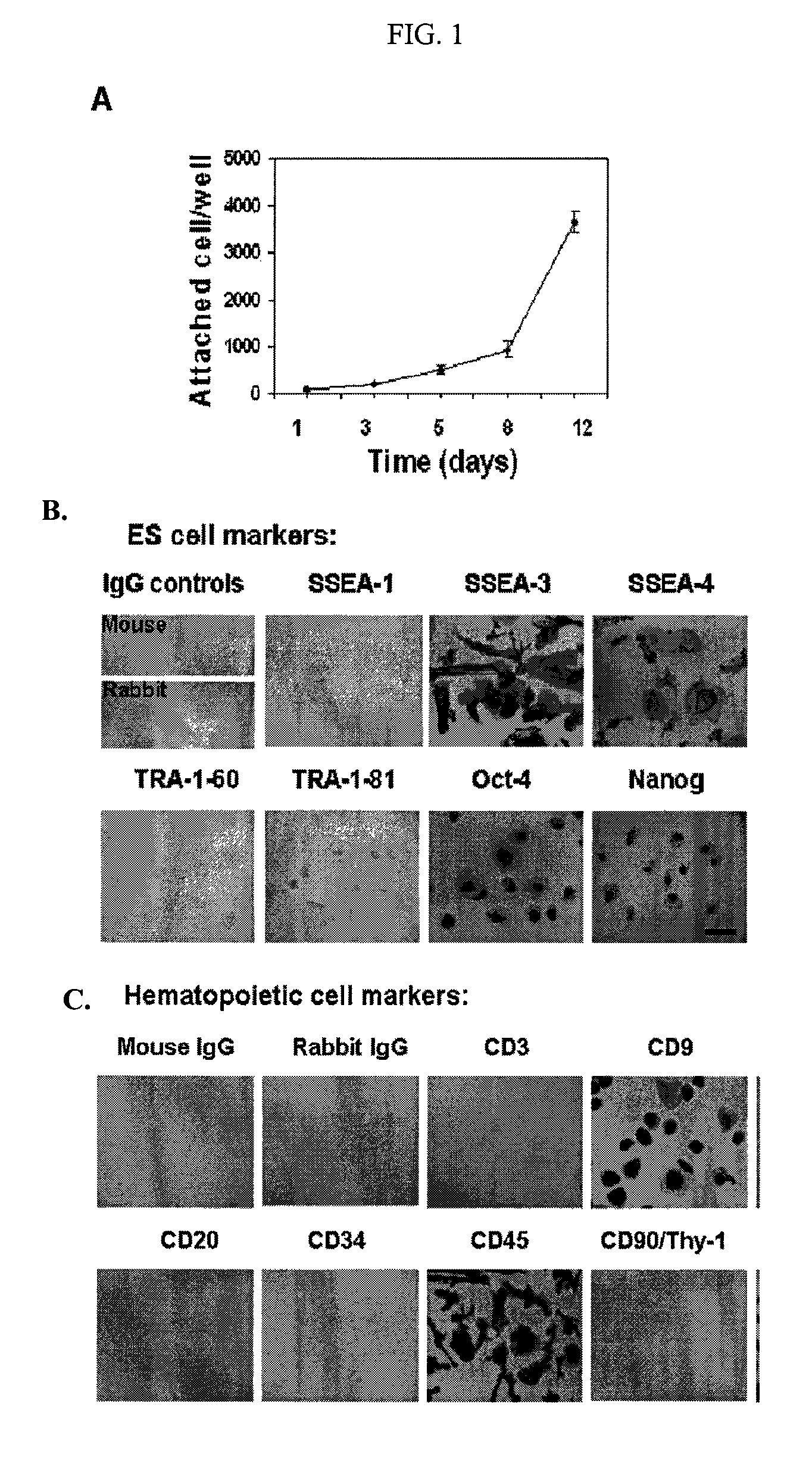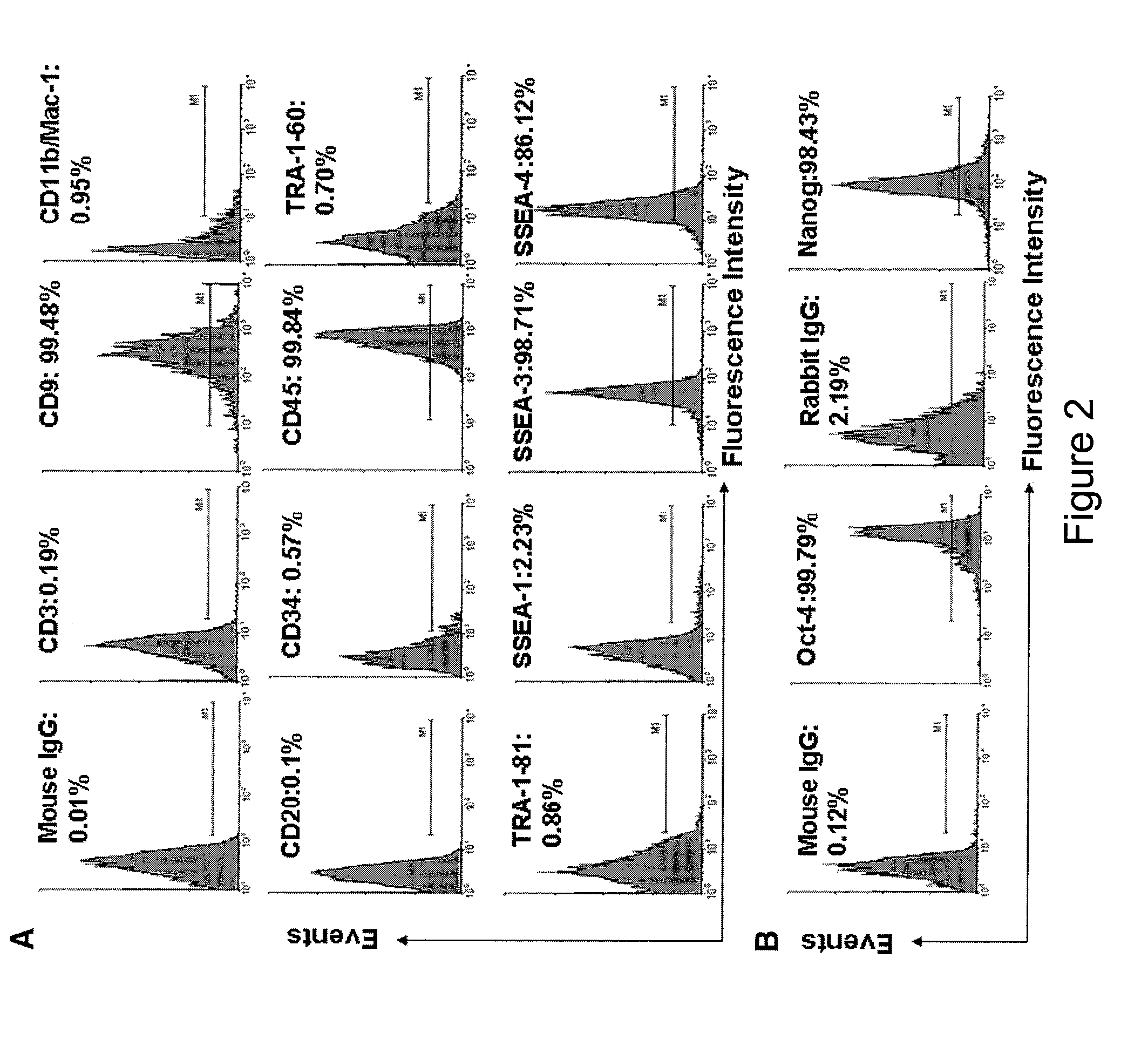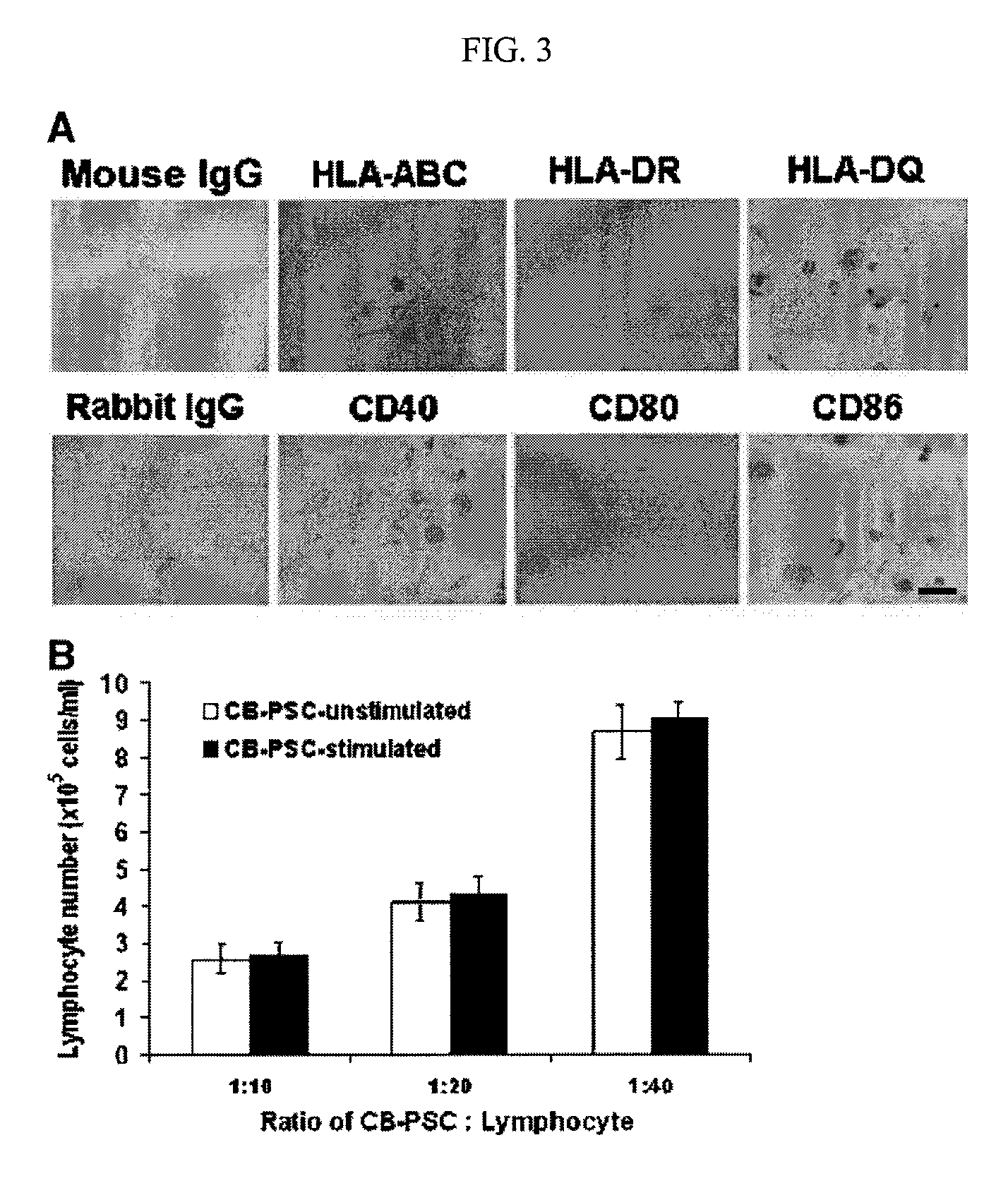Isolation of CD14 negative, CD45 positive and CD117 positive embryonic-like stem cells free of monocytes from human umbilical cord blood mononuclear cells
a technology monocytes, which is applied in the field of embryonic-like stem cells isolated from human umbilical cord blood, can solve the problems of inability to generate es cells, complex required technologies, and limited practical usefulness of es cells, etc., and achieves low immunogenicity, simple technology, and the effect of proliferation
- Summary
- Abstract
- Description
- Claims
- Application Information
AI Technical Summary
Benefits of technology
Problems solved by technology
Method used
Image
Examples
example 1
Isolation of Cord Blood-Stem Cells (CB-SC) from Human Umbilical Cord Blood and Cell Culture
Cell Culture
[0141]Human umbilical cord blood samples (50-100 ml / unit) were obtained from healthy donors (Life-Source Blood Services, Glenview, Ill.). Mononuclear cells were isolated using Ficoll-Hypaque (γ=1.077, Sigma), followed by removing red blood cells using Red Blood Cell Lysis buffer (eBioscience, San Diego, Calif.). Mononuclear cells were seeded into 8-Well Lab-Tek II Chamber Slides (Fisher Scientific) at 1-2×105 cells / ml, 0.5 ml / well in RPMI 1640 medium supplemented with 7% fetal bovine serum (Invitrogen, Carlsbad, Calif.), and incubated at 37° C., 8% CO2 conditions. Cells at 70-80% confluence were passaged every 5-7 days with the fresh RPMI 1640 medium supplemented with 7% fetal bovine serum at ratio 1:2. To expand cells on a large scale, mononuclear cells were initially seeded in 150×15 mm Petri dishes (Becton Dickinson Labware, Franklin Lakes, N.J.) at 1×106 cells / ml, 25 ml / dish in...
example 2
[0144]Immunostaining was performed as previously described with minor modifications [Y. Zhao, T. Mazzone, Human umbilical cord blood-derived f-macrophages retain pluripotentiality after thrombopoietin expansion, Exp Cell Res. 310 (2005) 311-318]. The cells were incubated for 20 minutes at room temperature with ImmunoPure Peroxidase Suppressor (Pierce, Rockford, Ill.) to block endogenous perioxidase activity. For fluorescence-labeled immunostaining, this step was omitted. After incubation with primary antibodies, cells were stained with ABC kit (Vector Laboratories, Burlingame, Calif.). Immunostaining was performed using the following antibodies: mouse anti-human monoclonal antibodies CD3, CD9, CD11b / Mac-1 (Clone ICRF44), CD20, CD34 (clone 563), R-PE-conjugated mouse anti-human CD34 monoclonal antibody (clone 563), CD45 (HI30), FITC-conjugated mouse anti-human CD45 monoclonal antibody (HI30), CD146 (Clone P1H12), human leukocyte antigen (HLA)-DR, HLA-DQ, isotype-matche...
example 3
Flow Analysis
[0146]For intracellular staining, cells were fixed with 4% paraformaldehyde for 20 min and then permeabilized with 0.5% Triton X-100 (Sigma) for 5-6 min at room temperature. For cell surface staining, the fixation and permeabilization steps were omitted. Cells were incubated with 2.5% horse serum (Vector Laboratories) at room temperature to block non-specific staining. Cells were incubated with primary antibodies for 45 min at 4° C. and then washed with cold PBS. Cells were stained with FITC-conjugated second antibodies for another 45 min at 4° C. and followed by flow analysis. Isotype-matched mouse IgG1κ antibody or normal rabbit IgG served as negative controls. After staining, cells were analyzed using a Beckman-Coulter Elite ESP.
[0147]Cells cultured in Petri dishes were washed with PBS and then solubilized with RIPA buffer (150 mM NaCl, 1.0% NP-40, 0.5% DOC, 0.1% SDS, 50 mM Tris (PH 8.0)) with a cocktail of protease inhibitors (Sigma). After forcing throu...
PUM
| Property | Measurement | Unit |
|---|---|---|
| doubling time | aaaaa | aaaaa |
| doubling time | aaaaa | aaaaa |
| temperatures | aaaaa | aaaaa |
Abstract
Description
Claims
Application Information
 Login to View More
Login to View More - R&D
- Intellectual Property
- Life Sciences
- Materials
- Tech Scout
- Unparalleled Data Quality
- Higher Quality Content
- 60% Fewer Hallucinations
Browse by: Latest US Patents, China's latest patents, Technical Efficacy Thesaurus, Application Domain, Technology Topic, Popular Technical Reports.
© 2025 PatSnap. All rights reserved.Legal|Privacy policy|Modern Slavery Act Transparency Statement|Sitemap|About US| Contact US: help@patsnap.com



